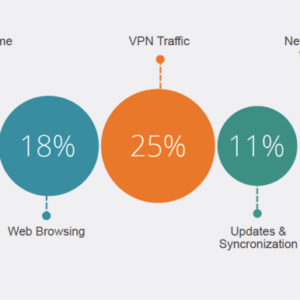Your mobile carrier has made it very expensive for you to leave the country with your mobile phone. Whether you live in the U.S., France or Uganda, the cost of mobile roaming can be a big expense for leisure or business travelers. Collectively, international data roaming fees will generate $42 billion in revenue for wireless companies worldwide by 2018, according Juniper Research.
European travelers can expect relief from roaming charges starting in June 2017. The agreement between carriers and the European Union will cap roaming charges at 0.05 euros per megabyte of data (about 6 cents per MB). Once those rates go into effect, EU residents will have the lowest roaming rates in the world, but the fees will apply only within the EU. Higher roaming rates will undoubtedly be charged when EU residents roam farther afield, as more than 150 European carriers, each with their own costs and pricing systems, look for ways to recover the lost revenue.
One way for travelers to reduce mobile costs abroad is to switch to a roaming plan from their carrier before leaving the country. Business travelers who take the precaution of purchasing roaming plans before leaving the U.S. pay average monthly charges of $240, according to Validas, a company that tracks wireless bills. Roaming plans reduce the average cost per megabyte to $3.48. While that is much better than getting hit with a roaming bill that can range into the thousands of dollars, it’s not even close to domestic rates, which are as low as 2 cents per megabyte.
Unsurprisingly, the high cost of roaming has generated its own thriving meme, with dozens of blog posts and articles popping up online every spring, offering advice to summer travelers. The top five best practices include:
1. Get a roaming plan. (Check!)
2. Buy a SIM card for the country you are visiting.
3. Disable backups to the cloud, and don’t stream rich media.
4. Use Wi-Fi hot spots whenever you can.
5. Don’t make voice calls (use Skype or other VoIP services instead).
It’s all great advice. And if travelers follow it, they can save themselves and their businesses a lot of money. But we wondered if business travelers were taking this advice seriously and acting on it. So we decided to find out – not by asking them but by tracking their activities. We analyzed 1.130 million MB of data from business travelers at 100 businesses ranging in size from small to large global corporations, as they roamed the world over the course of a month.
First insight: the average business traveler consumed 168 MB daily. If the cost per megabyte of $3.48 holds true, we’re looking at a potential average daily cost per traveler of $584.64. In reality, based on our conversations with large businesses, we believe that many have negotiated far more favorable packages with their carriers, so the average daily cost is closer to $42.
What really caught our attention, however, were the usage patterns, as shown below.
Let’s start with VPN traffic. Most businesses want their employees to connect to their business apps over the VPN. It’s the best way to encrypt e-mail and other traffic so hackers can’t intercept those data streams. We were surprised to see that only 25% of traffic traveled over the VPN, leaving 75% open to interception. In this case, we may be dealing with the law of unintended consequences: If you are following the advice to use hotel or public Wi-Fi to control costs, you are probably on a slow or intermittent connection that makes the VPN performance even worse. To stay productive, businesspeople use the fastest connection they can get – off the VPN.
Unfortunately, hotel or public Wi-Fi can be risky. Wired magazine recently reported on Dark Hotels, a malware hack that targets business travelers using Wi-Fi at luxury-class hotels, especially in Asia. If your employees are traveling abroad, encourage them to use the corporate VPN for business activities.
Next, we looked for leisure activities. We found that 37% of the traffic could be attributed to activities such as checking social media, Web browsing and downloading rich media like movies and music. The “bring-your-own-device” lifestyle and high-speed connections domestically have accustomed everyone to watching videos, streaming audio and just generally going about their Web browsing as if they were at home. The problem for businesses is that the behavior continues abroad with expensive ramifications.
Finally, we suspected that many businesspeople were not heeding advice to temporarily halt software backups. Cloud backups are essentially invisible to the average smartphone user, and therefore easily overlooked. The findings confirm that 20% of the data was consumed by automated system updates and cloud backups of items like photos and songs. Unless you are on a very long business trip, there’s no reason to keep those kinds of backups going in the background, sucking up bandwidth.
The analysis also shows that 37% of the data was consumed by nonwork activities like consuming music and movies and using social media, while 25% was used by encryption, or work-related traffic which uses VPN client services.
For a single traveler, the wasted data may cost a few hundred dollars a month. For large enterprises with many travelers, it can add up to a hefty expense, and for U.S. businesses collectively, it’s an enormous bill paid to the mobile carriers. In 2014, U.S. businesses spent $7.3 billion on Wi-Fi and cellular data charges for employees roaming abroad through their mobile carriers. Taking the nonwork and cloud backups together, about 56% of that data is wasted, meaning a potential $4 billion savings if U.S. companies can curtail this kind of traffic.
Noam Lando is CEO of Webbing (www.iamwebbing.com). Founded in early 2010, with offices in Tel-Aviv, New York and Hong Kong, Webbing enables enterprise mobility for business travelers in more than 170 countries using its multi-SIM mobile hot spot and enterprise management platform.
Editor’s Note: The RCR Wireless News Reality Check section is where C-level executives and advisory firms from across the mobile industry share unique insights and experiences.
Featured Image Copyright: waeske / 123RF Stock Photo


